State of play: Regions of Spain, Aragon
Spain is made up of 17 unique and autonomous regions and regional pride is often as big as national pride in what can often feel a fragmented and divided country. This time we look at La Rioja
Aragon is a diverse region, from Spain’s fourth or fifth biggest city depending on where you get your data in Zaragoza to the mountain range of the Pyrenees in the North that dominates.
Over 50% of the regions population live in the capital city with population movement internally from the other two provinces of Huesca and Teruel mainly due to vineyards being destroyed in these two provinces in the 20th century by grape phylloxera or in simple terms a small yellow insect.
Aragon is a diverse region, from the mountainous Pyrenees to the flat central part of the region where the river Ebro flows through, weather can be vastly different in one part of the region to the next.
Diversity is seen throughout the region, over 50,000 of the population can speak Catalan, 25,000 speak Aragonese with most of those living in the Pyrenees and the region has buildings from the Roman times, the Muslim conquest of Spain all the way through to the modern Spain we have now.
Bordering France to the North, Catalonia and Valencia to the East, Castile-La Mancha to the South and Castile and Leon, La Rioja and Navarre to the west. The region is the fourth biggest by area in Spain but eleventh biggest by population.
While neighbouring regions such as Catalonia were one of the first to pick up football in Spain, Aragon was a late comer to the game but they’ve more than made up for that.
Giants
With Zaragoza hosting over 50% of the regions population it’s no surprise that city was the first to be involved in football.
What might be a surprise though is the team was called Iberia SC. Iberia were the first side from the region to be involved in the founding of the national Spanish league in 1929. They began in Segunda while a rival city side called Zaragoza CD began in the regional leagues.
By 1932 Iberia SC had fallen to the third tier and a merger was form to create Real Zaragoza between the two clubs.
By 1940 and having seen a four year hiatus in league football due to the civil war, Real Zaragoza found themselves in La Liga representing the region.
The club though was a yo-yo team and it took until 1956 the year the club moved into La Romareda for the club to go on a long run in the top flight. This kicked off a golden period in the clubs history regularly challenging for La Liga and reaching the Copa del Rey final four years in a row from 1962 onwards.
The team was built around an attacking line up with stars such as Canario, Juan Manuel Villa, Eleuterio Santos, Marcelino and Carlos Lapetra.
With over 50,000 cramming into La Romareda every week Zaragoza finished in the top half 8 seasons in a row but in 1970 they dropped to 16th and in 71 the side fell out of La Liga.
It was to be one just one season out of the limelight and the club roared back up. From 1956 to 2013 the club would be relegated four times but never spend more than a season out of La Liga in each of those relegations.
Local boy done good
Victor Fernandez grew up a Real Zaragoza fan, he never had a playing career and was coaching the B team when the first team job was given to him at 31 in 1991. Fernandez was younger than some of the squad he inherited, with Real Zaragoza in trouble he led them to safety in his first season in the relegation play-offs
What followed was Real Zaragoza capturing the imagination in Spain and further afield under his attacking style.
Again that pivotal year of 1992 and the club becoming a PLC saw the Aragon giants kick on and they made the Copa del Rey final losing to Real Madrid.
With players such as Gustavo Poyet, Nayim, Paquete Higuera and Dario Franco the team kicked on winning the Copa the next season to claim an impressive fourth cup success.
They also finished third in La Liga with historic results under their attacking style beating Barca 6-3, Real Madrid 4-1 and 0-4 at the Vicente Calderon against Atleti in 1994.
The Copa win saw them qualify for the Cup Winners Cup in 1994/95 where they made it to the final against Arsenal. Many can still picture the goal Nayim scored from close to the touchline against David Seaman as the Aagon side took the trophy in Paris.
Following that victory over 150,000 waited for the team in the Plaza del Pilar in the city centre. That though was to signal the end of that team, just over a year later Victor had left the club and slowly the team was disbanded.
Gustavo Poyet, Nayim, the captain Pardeza, Higuera plus young strikers coming through in Fernando Morientes and Dani left.
A further blow happened in 2000 when the club finished fourth but failed to get Champions League qualification as Real Madrid who finished fifth were awarded the place for winning the Champions League.
In typical Real Zaragoza fashion they almost got relegated the next season surviving on the final day yet won the Copa del Rey against Celta Vigo coached by Victor Fernandez.
The following season they didn’t go as expected, despite spending over €25 million they were relegated in bottom. The players could only get out of the ground via a police escort with thousands of angry supporters waiting outside for them.
Having done what they always did and bounced back to La Liga at the first attempt the next season saw them create a historic moment as they reached the Copa del Rey final against Real Madrid. That game is known in Spain as the Galacticidio due to the end it put to the galactico era.
The club continued to attract great players with David Villa leaving and being replaced by Diego Milito. Their legendary cup traits continued as they knocked out Ronaldinho’s Barca before putting six past Real Madrid in the first leg of their semi final. Unfortunately come the final they were demolished 4-1 by Espanyol.
Victor Fernandez returned in 2009 with Agapito Iglesias as owner and ploughing money in the club signed Pablo Aimar, Andres D’Alessandro and Gerard Pique to compliment Milito who scored 25 goals. With players such as Gabi and Roberto Ayala mixed in it was arguably the greatest and most expensive squad in the club’s history as they headed into 2007/08.
While the owner and fans dreamed of Champions League they instead somehow ended up relegated. Real Zaragoza went through four coaches that season in a disastrous season. While they again bounced back the damage long term had been done.
From the glory of their Copa days and regular European qualifiers the club now became relegation battlers not finishing higher than 13th in their four seasons back in La Liga until their relegation in 2013.
This time there was no instant bounce back and the giants of the region have been marooned in the second tier since.
With Real Zaragoza battling to get out of Segunda a new force emerged in Aragon.
From the shadow
While football took it’s time to get started in Zaragoza, in the province of Huesca football began in 1910. A number of sides represented the city but SD Huesca began in 1960 in the fourth tier.
To say they were the second team in the region though during their early days wouldn’t be right, often Zaragoza B would be the second team in placing and standing.
It took until 2009 for Huesca to make it to Segunda, what made it even more special was Real Zaragoza awaited them in the second tier. Given the sides had never met in a league match nobody knew how the derbi would be but their was enough animosity to ensure this would be competitive and a 2-2 draw at the iconic La Romareda was well received.
After a few years in the second tier hovering around mid-table Huesca fell out of the second tier in 2013 but that wasn’t the end of their story and in 2015 they returned to Segunda.
This was during the era when historically smaller sides such as Eibar and Leganes had surprised the establishment by gaining promotion to La Liga and Huesca became the next underdog story in 2018.
Finishing in second and taking the last automatic promotion spot ahead of you guessed it Real Zaragoza under Rubi, Huesca when you look back had utilised the loan market to perfection. Current Spain third choice keeper Alex Remiro was loaned from Athletic Club, he wasn’t the only one to become an established La Liga player at the club with Moi Gomez, Chimy Avila and Cucho Hernandez all loanees.
That mixed with players who went on to become established Segunda names such as Jair, Alex Gallar, Alvaro Vadillo and current Huesca captain Jorge Pulido made for a perfect mix.
Alcoraz, Huesca’s home was named after a famous battle between 1094 and 1096 outside the city, it’s a tight and compact stadium which added to Huesca’s location just south of the Pyrenees can be one of the coldest in Spain and feel a million miles away from the glitz and glamour of La Liga.
It took a big summer of work to get the ground ready for La Liga football, the club lost Rubi their Head Coach who took the Espanyol job, they also lost Alex Remiro who’s loan ended. Despite fighting valiantly they finished eight points adrift of safety in their first La Liga outing. They had a rude awakening losing 8-2 to Barca in the third game of the season but also had good moments beating Sevilla 2-1, a 4-0 thrashing of Real Valladolid and a draw with Athletic Club at San Memes.
For the first time ever they’d been a division above their neighbours and been the top dogs in Aragon and incredibly they did it again the following season finishing top of Segunda after Real Zaragoza collapsed when football resumed after the COVID shutdown having sat top and looked shoo-ins for promotion.
Michel had guided the club to promotion with his clear style of attacking football which would later catch the eye at Girona. The club again utilised the loan market to spearhead their promotion charge although top scorer was former Premier League winner Shinji Okazaki with 12 having arrived on a free transfer.
Draws ended up being the primary reason Huesca failed to stay in La Liga the following season with 13 of them seeing them fall two points shy of safety.
Since their return to Segunda in 2021 it’s been a slog, the club didn’t get the financial benefits of top flight football with the season played behind closed doors and they quickly became a mid-table Segunda side.
Last season was the closest they got to a return to La Liga, they occupied a play-off spot for most of the season despite having one of the smallest budgets and squads in the league under talented Head Coach Antonio Hidalgo but ran out of steam towards the end of the season finishing 8th. Hidalgo left at the end of this season for Depor and they’ve signed another up and coming coach in Sergi Guillo who did a fantastic job at Mérida.
Having spent most of their history in the big shadow of their giant neighbours they’ve finished above them in eight of the last ten seasons, for some Real Zaragoza fans they will never treat them as equals but slowly but surely the derbi is increasing in it’s intensity.
Slow and Steady
SD Tarazona started life in the sixth tier in 1969, their ground holds just 1500 spectators but amazingly they currently play in the third tier alongside sides such as Real Murcia and Hercules. Coming from the same province as Zaragoza it was always going to be difficult to catch the attention of the province.
What’s great about SD Tarazona is they’ve built the club slowly but surely, from beginning in the sixth tier they slowly established themselves as a fourth tier side.
In 2021 they finally made it to the third tier in it’s last season as Segunda B, while they fell out of the third tier in it’s complicated restructure just two seasons later they returned. In 23/24 they finished midtable and incredibly last season finished 6th just five points and one place off the play-offs. That now means they will have qualified for the Copa del Rey next season bringing an increase to the budget if they can secure a lucrative tie. While we missed out on three teams from the region in Segunda, next season they won’t be the only side representing Aragon in Primera RFEF.
Teruel Exists
Teruel is one of the provinces of Spain that is undergoing huge depopulation over the last 100 years. Teruel is the second smallest Spanish province by population in Spain with Soria taking the crown. Teruel has 73 ghost towns out of 236 towns in the province. La Estrella is a famous example after the last two residents Martin and Sinfrosa an elderly couple who had spent three decades as the last remaining people in the town story was shared on social media and YouTube. They unfortunately had to leave due to ill-health recently leaving the town the latest to be left empty.
As the years go by unfortunately the province of Teruel will likely have more than the current 73 ghost towns, but in the midst of what feels a depressing time football is a relief.
In 1999 the province launched a campaign and a political group that translates as Teruel exists given so little is known of the province. In football though they’ve fought to keep the name in the minds and eye of people. The club of CD Teruel has punched above it’s weight with the team floating between the third and fourth tiers since the late 80s.
Last season the club had been relegated back to the fourth tier but fought their way to a play-off spot and beat heavily fancied Atletico Baleares in the semi finals.
It was apt that the final saw them take on Numancia the side from Soria, the smallest province in Spain and another province suffering heavily from ghost towns and depopulation.
The two smallest provinces battled it out for a place in the third tier and despite Numancia being from the smaller province they were the goliath’s relatively speaking. Numancia had spent time in La Liga with their most recent spell coming in 2009 when they beat Pep Guardiola in his first league match as Head Coach of Barca.
The first leg in Teruel ended goalless and the second leg looked to be heading the same way until Teruel got a last minute penalty which they scored to secure their place in Primera RFEF next season.
Next season will be tricky for both the Aragon clubs in the third tier, they face historic names but also long distances as they will have to travel down to Andalucia due to the regionalisation of the third tier this year.
Cantera
The region has mainly seen the talent come through the cantera of Real Zaragoza and it’s no surprise given over 50% of the regions population resides in the city.
Real Zaragoza continue to churn out talent although their impact compared to Asturias hasn’t been as big.
State of play
It’s been a long time now since Real Zaragoza sat on the top table of Spanish football, with them now moving to the temporary ground as La Romareda is redeveloped it feels that wait could go on. The hope though is in seeing that Real Oviedo after 24 years have been able to return then surely at some point the giants of Aragon can get their act together and return.
Huesca have accepted their status as a Segunda club after two seasons in La Liga but continue to look for talented young Head Coaches to help the club be competitive in one of Europe’s most competitive leagues.
Lower down the ladder given the depopulation in Teruel and the shadow Real Zaragoza cast over the region it’s pleasing to see two clubs from the region competitive in the third tier.




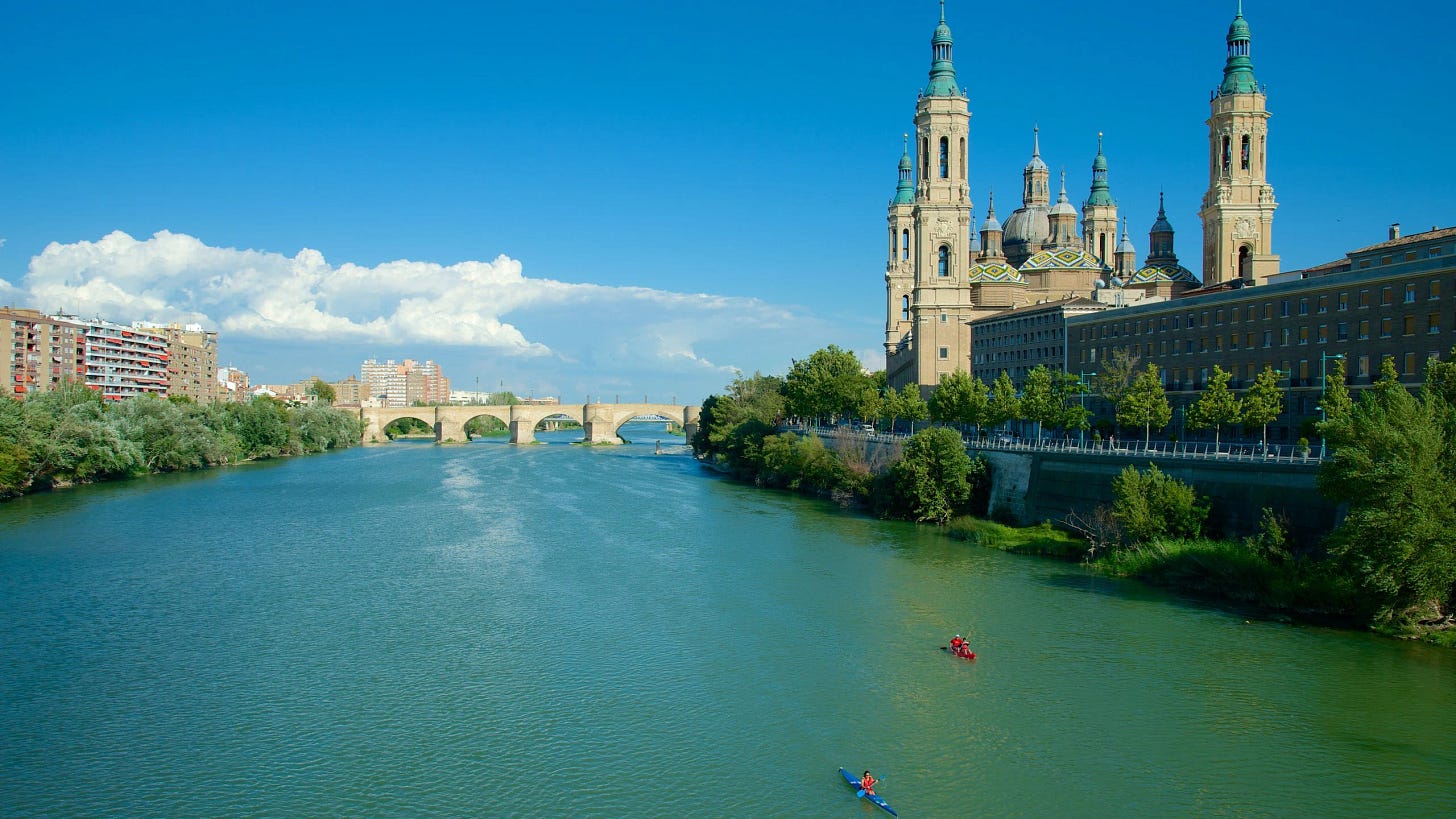

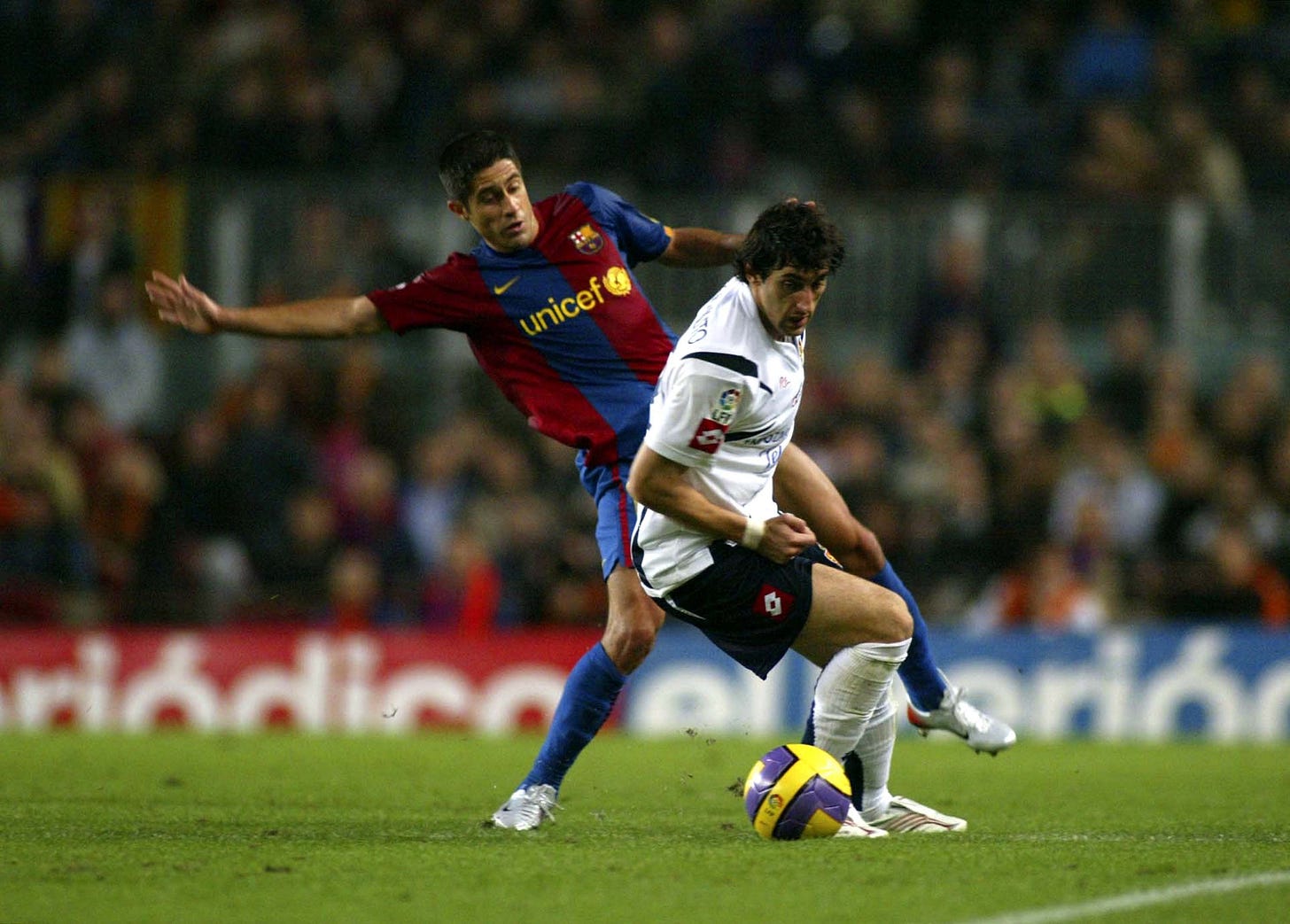
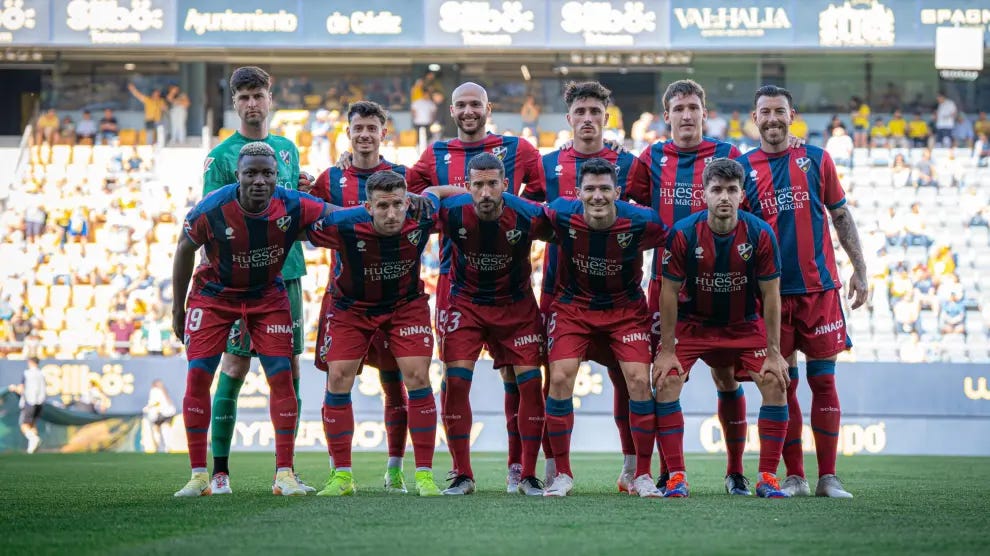
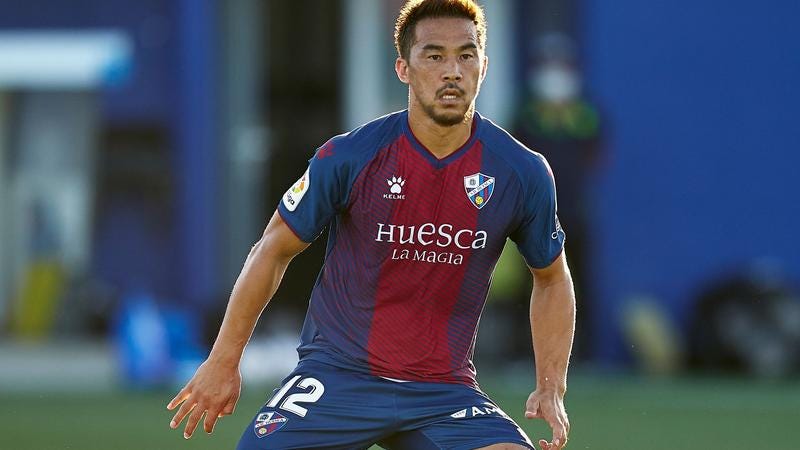
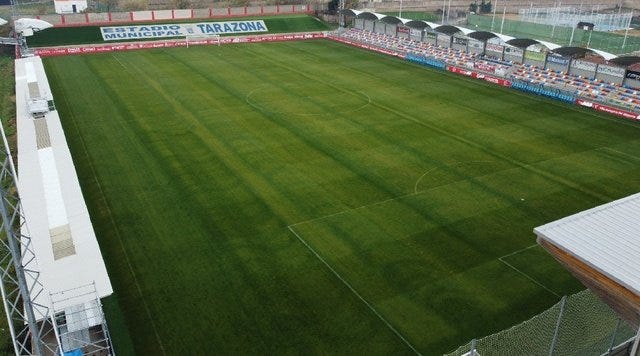
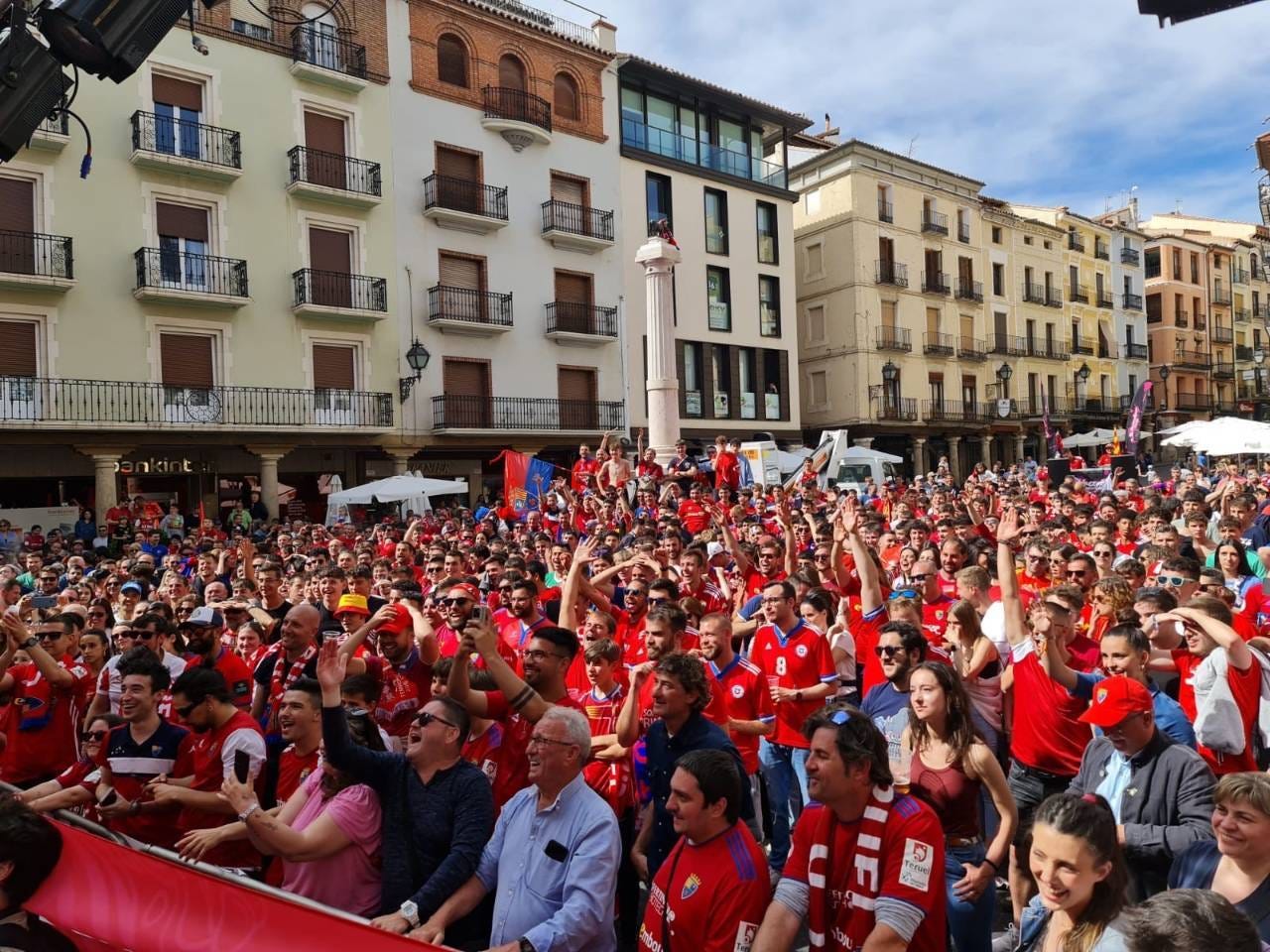
Seaman getting beaten by a long looping ball was some impressive foreshadowing to the ‘02 World Cup.